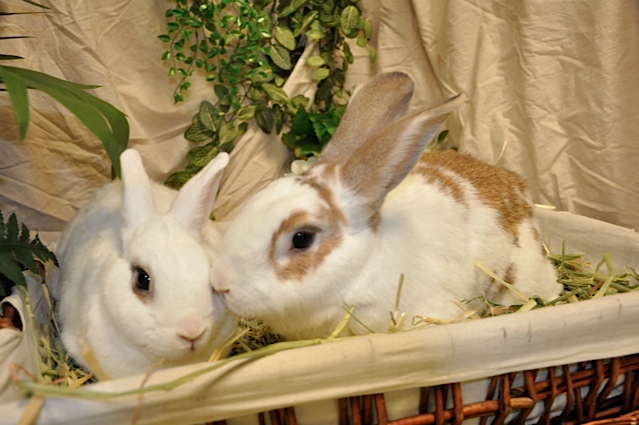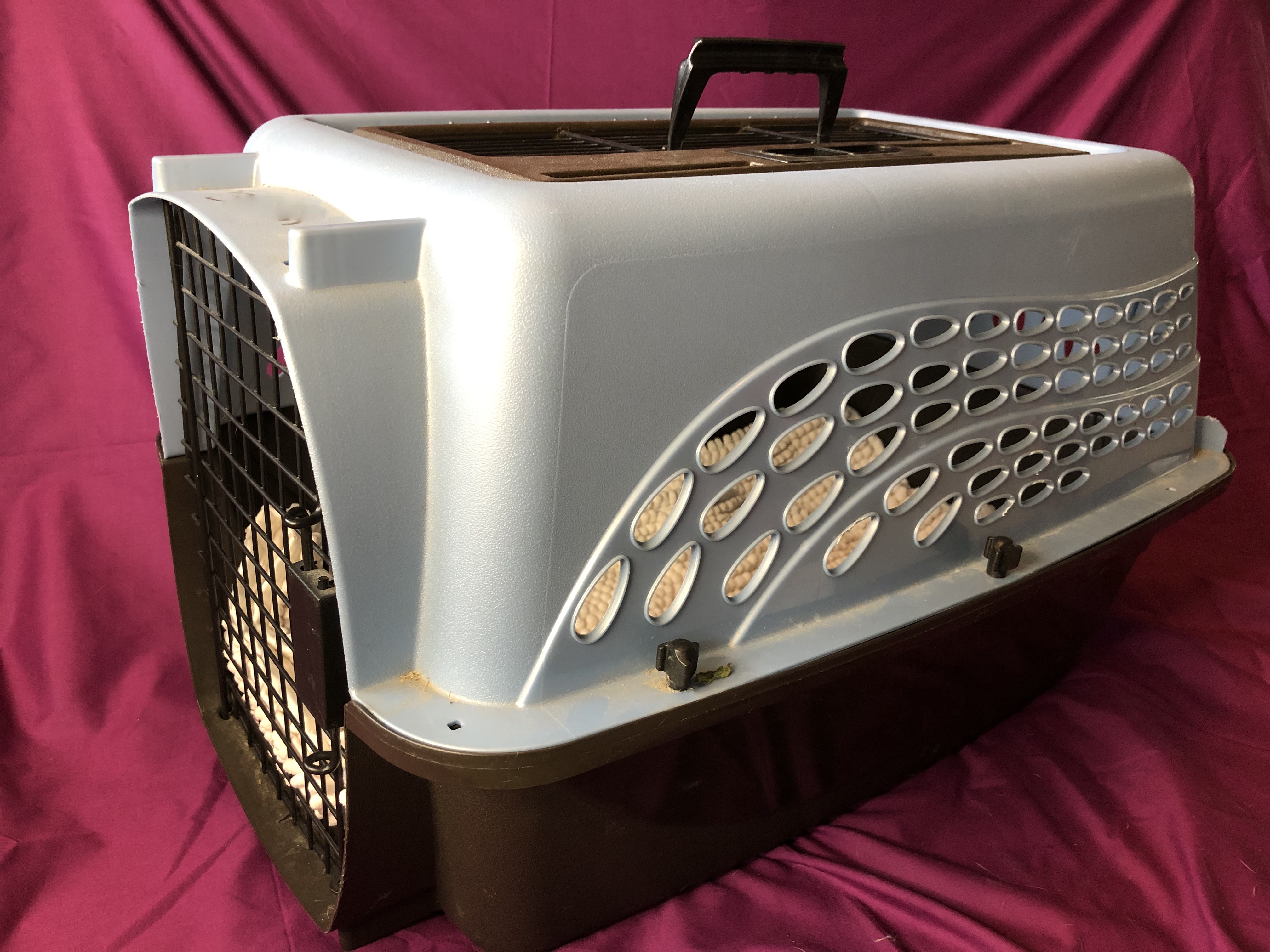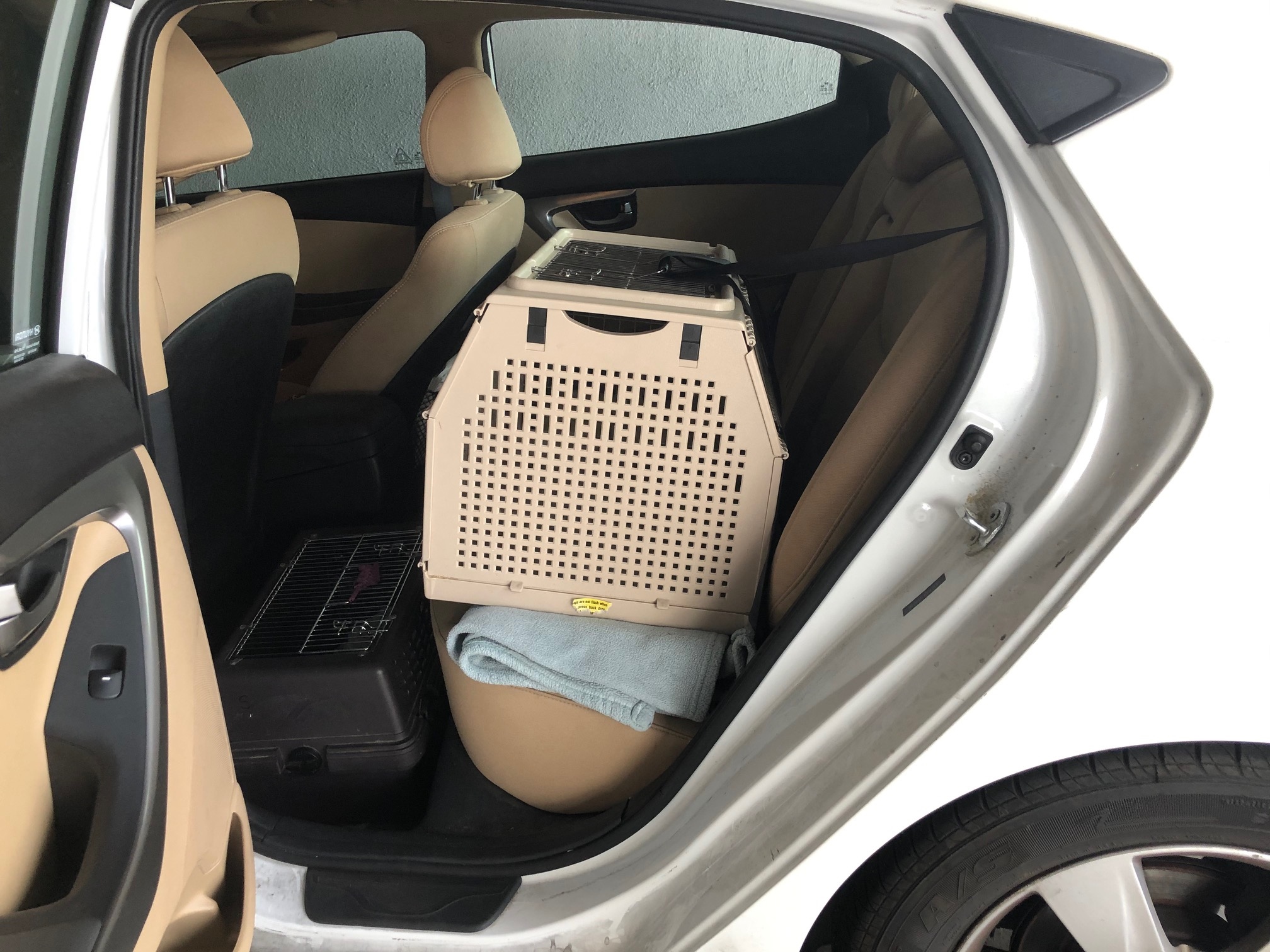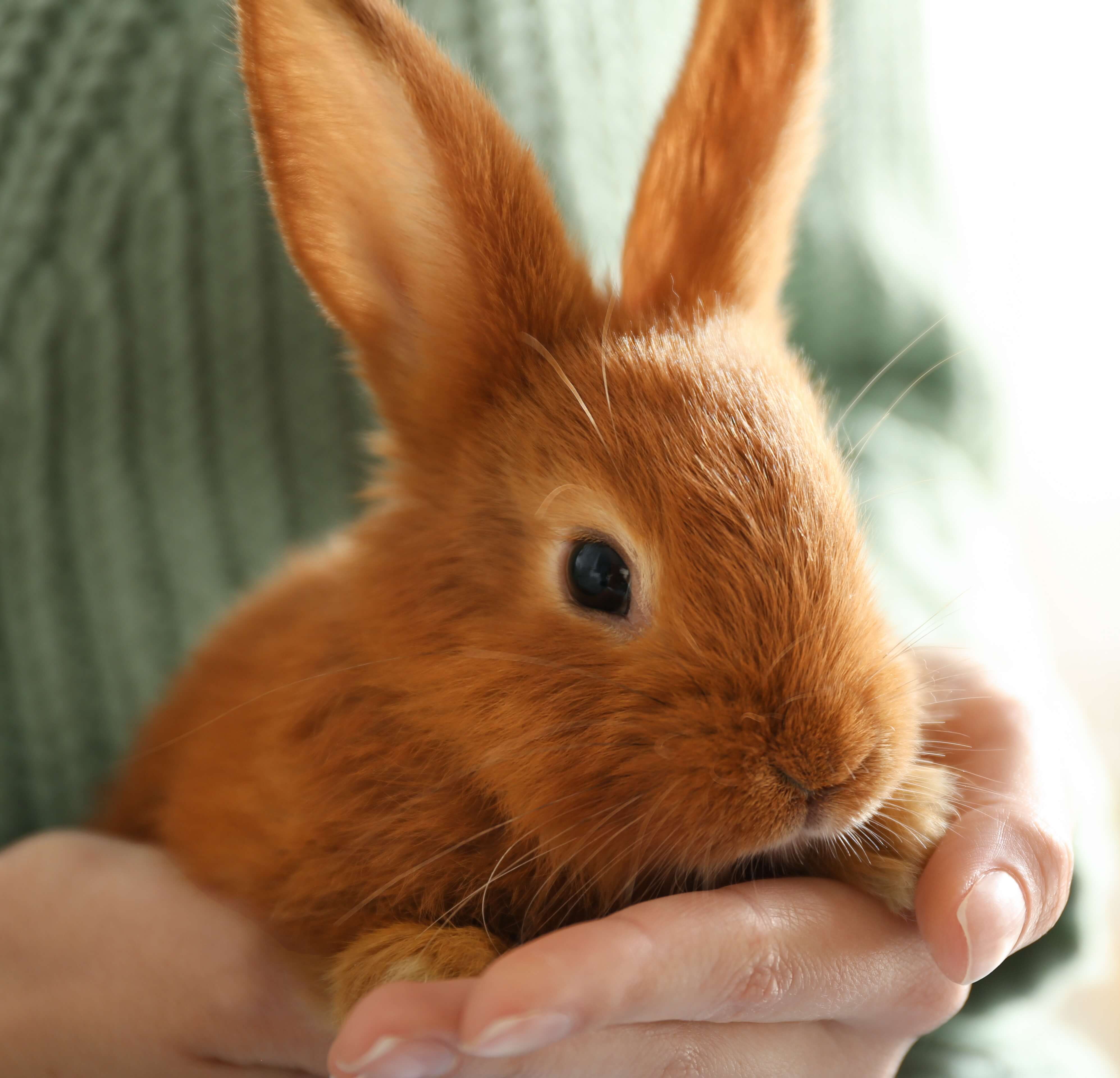- Home
- Transporting Rabbits
Transporting Rabbits
 Benny and June in a basket.
Benny and June in a basket.Photo by Kristina Driskill taken at BunnyLuv Rabbit Resource Center.
Transporting Rabbits Short Distances
Over the years, I have seen people transporting rabbits in very strange ways - cardboard boxes, laundry baskets, thermal lunch bags, shoe boxes, blankets, bags, baskets, cages, etc. None of those things listed, and including carrying them or having them on a harness, is an ideal way to transport rabbits.
Why Not Just Carry or Use a Harness?
The problem with carrying rabbits/having them on a harness and carrying them is related to stress. As mentioned in Handling, being held is not a calming experience for a rabbit. If they become frightened and suddenly try to bolt from your arms, it’s a long way down to the ground. Furthermore, if you are outside, they may just continue to run down the street as fast as they can - or even more horrifying - dart in front of a car.
Keeping a bunny on your lap in a car - whether you are the driver or the passenger - is inviting trouble. A bunny can jump onto the driver side floor and quickly create chaos. Additionally, the bunny can be seriously injured or injury you in the event of an accident. Harnesses are perfect for dogs, but I don’t particularly endorse them for rabbits. A seatbelt harness can keep your pooch safe during a trip in the car, but it will do nothing to keep your bunny safe during an accident or sudden stop. The same concept applies to transporting a bunny in a regular wire cage (these are cages sold at pet stores to house rabbits or guinea pigs). Usually there is just a simple clip that keeps the wire top attached to a plastic bottom. The top can easily come off during a collision and your bunny becomes a projectile, which can injury you and/or your passengers, and will certainly cause serious injury or death to your rabbit. Wire crates are also not optimal. They are stronger than a cage, but they leave a rabbit feel more exposed without a way to hide and feel secure. If you happen to use a crate, I suggest covering a portion of the crate with a towel, as rabbits do not like drafts; allow for adequate ventilation.
Carriers
 Hard plastic carrier with a door on the top and on the side. It's easy to clean and keeps your bunny safe.
Hard plastic carrier with a door on the top and on the side. It's easy to clean and keeps your bunny safe.The best method of transporting rabbits is with a plastic hard-sided carrier. It’s the same type of carrier people use to transport cats or small dogs. You can line the bottom with a towel and/or hay, and include a favorite toy (if the bunny is by himself) and a treat. Myself, I prefer to use a towel, rather than exclusively hay, as it soaks up any urine and makes it easier to clean the carrier after use. I rarely include water for short distances, as bunnies tend to be too nervous to drink and it just makes a giant mess. I personally prefer and highly recommend carriers with a door on the side and the top. The top door makes it easier to reach in and take out the bunny, instead of trying to wrestle him out through the side door, a process that is more stressful for all parties involved. Also, if the bunny is particularly stubborn, retrieving him may require taking the carrier apart.
 I like to line my carrier with a big towel. If I am transporting a single bunny, I will add his favorite stuffed animal. I will always bring a small bag of treats. (Dried Calendula flowers from Food4Buns).
I like to line my carrier with a big towel. If I am transporting a single bunny, I will add his favorite stuffed animal. I will always bring a small bag of treats. (Dried Calendula flowers from Food4Buns). Soft-sided pet carrier.
Soft-sided pet carrier.Some people prefer soft-sided carriers that look more like duffel bags (or a little fancier). These sort of carriers do not protect the bunny as much as a hard-sided carrier. They are more susceptible to bunny teeth and harder to clean, as well. As a result, they need to be replaced much more quickly than a hard-sided carrier.
Important! If you have a pair of bunnies, always bring the partner along, even if only one bunny needs to be seen by the vet. Transporting is a stressful experience for the rabbit and the presence of a best friend eases that discomfort. If you happen to have a group and you don’t want to lift and carry around a sick bunny with 10 of his friends, just bring his best friend.
 There are a number of different and wild-looking carriers out there. Disclaimer: I did not actually buy this pink and purple, leopard-print carrier, but I did keep it (I received baby Panda in this. The shelter said they REALLY did not want it back).
There are a number of different and wild-looking carriers out there. Disclaimer: I did not actually buy this pink and purple, leopard-print carrier, but I did keep it (I received baby Panda in this. The shelter said they REALLY did not want it back).Transporting Rabbits
 Wrap your frozen water bottle in small hand towel, so it's comfortable for your bunny to lean against.
Wrap your frozen water bottle in small hand towel, so it's comfortable for your bunny to lean against.When transporting rabbits, make sure the temperature in the car is comfortable, but keep the bunny away from a direct draft (whether cool or warm air). Definitely do not keep your bunny in the car alone on a warm day! Even on a moderate day, temperatures inside of a vehicle rise quickly. If your car does not have air conditioning, place a frozen water bottle in the carrier for the bunny to lean against if they get too hot.
Keep your bunny safe by placing the carrier on the floor of the back seat, if possible, or buckling the carrier in. Often carriers are too big to be placed on the floor of the back seat, but this location does limit the movement of the carrier and is the safest location to place the bunny. The alternative is to place the carrier on the backseat, loop the seat belt through the handle of the carrier and buckle the belt in. You can put a towel on the seat to make the carrier sit level. The cargo hold is also acceptable (NOT the trunk) as long as you are able to fasten the carrier to prevent sliding.
 The smaller carrier is on the floor of the backseat. The larger carrier is secured on the backseat with the seatbelt. A blanket is used to level the carrier, so the bunnies don't slide around in the carrier.
The smaller carrier is on the floor of the backseat. The larger carrier is secured on the backseat with the seatbelt. A blanket is used to level the carrier, so the bunnies don't slide around in the carrier.




